The Glia Pulse Oximeter
Quick Links 
Introduction

A pulse oximeter assesses and visually communicates the level of oxygenated hemoglobin in arterial blood (Sp0s) in both clinical and surgical settings. In typical medical environments, pulse oximetry is the standard modality for physicians to monitor hypoxemic (low blood oxygen) patients undergoing anesthesia, pneumonia and acute respiratory distress syndrome. A simple finger probe allows pulse oximetry to be the most non-invasive method for measuring a patient’s oxyhemoglobin saturation.
The pulse oximeter measures hemoglobin oxygen saturation by comparing light absorbance across various wavelengths through a translucent part of the body, such as a fingertip or ear lobe. The oximeter displays the SpO2 with an audible signal for each pulse beat, a pulse rate and, in most models, a graphical display of the blood flow past the probe.
Gold standard Nellcor pulse oximeters have a current cost range up to USD$1000, making it an unaffordable medical device for many rural areas within Canada and low-middle income countries. This disparity was recognized by the World Health Organization (WHO), which estimated that under-resourced countries needed one million pulse oximeters and initiated the Global Pulse Oximetry Project in 2008 as a response to the crisis. Another study suggested that, in the surgical setting, only 41-70% of operating rooms in low-middle income countries had access to a pulse oximeter during surgery, compared with 100% in high-income countries.
Pulse oximeters have been proven to inaccurately diagnose patients with melanated (dark) skin, largely due to reduced clinical trial requirements for inclusion of darker-skinned patients, inaccessible hardware design changes, and recycled, out-of-date proprietary data sets. Market research on current pulse oximeters, especially OTC (over-the-counter) brands sold directly to patients, has clearly shown that inaccurate blood oxygenation readings on melanated skin has led to clinical misdiagnosis and possible patient mortality, an alarming disparity especially prominent during the Covid-19 pandemic.
Inspired to address these multiple inaccessibility points, Glia began developing a low-cost, 3D printable, open-source pulse oximeter in 2015 by partnering with the University of Ottawa’s Engineering Department to lead a Makerspace Oximeter Design Challenge. Students worked in four focus groups on individual pulse oximeter components: TI chip, arduino microcontroller, calibration and eight wavelength. Two of these teams completed their components in 2016, which created a baseline for further design improvement. In 2016, Glia initiated ethics and protocol for a clinical trail with London Health Sciences Center while at the same time collaborating with Inštitut IRNAS, a Slovenian company which was developing an open-source, low-cost pulse oximeter. By June 2019, the hardware and firmware of the IRNAS and Glia collaboration debuted on the Glia GitHub, just in time for the clinical trail pilot at Victoria Hospital in September 2019.
The Covid-19 pandemic suspended ICU access for the clinical trial from Spring 2020 through 2022. Glia has retained Health Canada Ethics Board Approval to continue the trial, which is targeted to resume in 2023.
Objective

While there are many inexpensive pulse oximeters available for purchase, their quality is typically low and they are often not tested for use in a clinical setting. Developing an affordable yet high quality and accurate pulse oximeter validated for clinical practice will increase accessibility to this life-saving device for patient communities in desperate need.
As of Autumn 2022, the Glia pulse oximeter project remains in progress. Clinical calibration and validation must be perfected on human subjects, and the findings published. Once the data exhibits equal performance compared to a premium-brand counterparts, Glia will begin manufacturing the pulse oximeter in both the Canada and Gaza offices. Glia supports decentralized manufacturing which allows for rapid production in remote or low-resource communities, a process which will be documented in the project online repository. A bill of materials for the pulse oximeter can be found in our GitHub demonstrating the potential cost-savings over the gold standard Nellcor, which currently has a USD$1000 price point.
Glia is in the process of obtaining a Health Canada Class II Medical Device Establishment License to manufacture the pulse oximeter, and is targeting a current retail price of CAD$400 for a completed unit.
Project Timeline

Get Involved
- Support Glia Projects Like This Through Donation
- Opportunities (coming soon)
- News and Events
